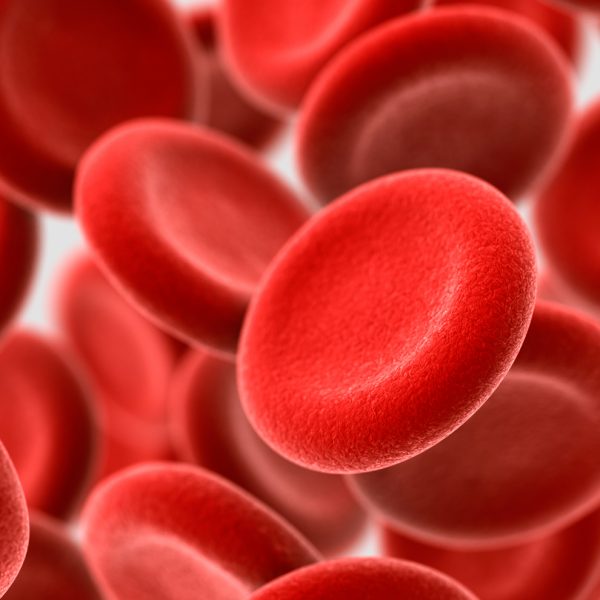If you have suffered at least one miscarriage, or your doctor has indicated that you are at a higher risk for miscarriage than most women, you may want to find out what your Homocysteine levels are to thwart a devastating result to your pregnancy.
Homocysteine is a common sulfur-containing amino acid found in the body. While it is not harmful in normal levels, when those levels get too high (especially during pregnancy), it can cause a condition called hypercoagulability. What does this mean? In general, your blood clots much more easily than it should. Not only can it put you at a higher risk for a heart attack and stroke, but it can put your baby in danger as well.
As small blood clots begin to develop in the uterus, the placenta can be cut off, leaving the fetus void of the oxygen and nutrient supply it needs to survive. This can induce a spontaneous abortion, otherwise known as miscarriage. In the event your pregnancy develops past the 24th week before the clotting develops, a stillbirth or premature birth can result. With no tests available to check for these clots and no other warning signs offered by the body, the danger often remains unseen until it is too late.
How High is Too High for Homocysteine Levels?
When it comes to determining safe Homocysteine levels, there is quite a bit of debate as to what constitutes a dangerous level for a growing fetus. But one thing is certain: high levels do put a normal pregnancy at risk and the higher the level, the higher the risk.
Researchers in Bergen and Oslo, Norway, studied several thousands of people in Hordaland County in Western Norway and reported that Homocysteine levels higher than 10-10.7 μmol/L increased a woman’s chance of a miscarriage by a whopping 38%. Even more alarming was the fact that high Homocysteine levels also seem to predispose a woman to preeclampsia and premature labor. Those with levels above ten had a five times greater chance of developing preeclampsia (dangerously high blood pressure) and twice the rate of premature labor than women with normal Homocysteine levels did. These results have been repeated by several other studies throughout the world.
What Makes Homocysteine Levels Rise?
So, what makes a woman’s Homocysteine levels suddenly rise to dangerous levels? No one knows for certain, but one theory subscribes to the fact that women with a MTHFR Gene Mutations (especially the C677T variation) are much more likely to have higher than normal Homocysteine levels in the body all of the time. It is just that their levels do not pose a risk to their health until a pregnancy occurs.
How to Lower Homocysteine Levels
If your doctor does diagnose high Homocysteine levels in your body, what can you do to lower them quickly and protect your pregnancy? The most common therapy requires taking a combination of Folic Acid ( 400-1,000 mg per day); B6 (10-50 mg. per day) and B12 (50-300 mg per day). Why? These three main vitamins can be used by the body to convert homocysteine amino acids into other products in the blood, to keep it from clotting unnecessarily. A more natural solution than pharmaceutical drugs, it remains the most popular and safest method of balancing this unique disorder.
In addition, some doctors recommend adding Vitamin E (a natural blood thinner) and Zinc (an excellent toner) to your vitamin regiment also to help lower high Homocysteine levels.
All of these nutrients can be found in our Baby and Me Prenatal vitamin. If you need a prenatal multivitamin that contains methylated folate, consider learning more about Baby & Me 2TM.
While it is true that high homocysteine levels can put any pregnancy at risk, those who are aware of their levels can be proactive, working to naturally lower these dangerous amino acid levels and salvage their pregnancy. When repeated miscarriages have already occurred, having your homocysteine levels checked can help to prevent further disappointment by alerting you to a problem that can indeed be remedied with vitamin therapy.
- Danielsson, Krissi. (June 19, 2014). Homocysteine and Miscarriage – What You Should Know. Retrieved from: http://miscarriage.about.com/od/thrombophiliadisorders/p/homocysteine.htm
- Glenville, Marilyn, M.D. (n.d). Miscarriage. Retrieved from: http://www.marilynglenville.com/womens-health-issues/miscarriage/
- Refsum, H., Nurk, E., Smith, A. D., Ueland, P. M., Gjesdal, C. G., Bjelland, I., … & Vollset, S. E. (2006). The Hordaland Homocysteine Study: a community-based study of homocysteine, its determinants, and associations with disease. The Journal of nutrition, 136(6), 1731S-1740S. Retrieved from: https://academic.oup.com/jn/article/136/6/1731S/4664474
- Nelen, W. L., Blom, H. J., Steegers, E. A., den Heijer, M., Thomas, C. M., & Eskes, T. K. (2000). Homocysteine and folate levels as risk factors for recurrent early pregnancy loss. Obstetrics & Gynecology, 95(4), 519-524 Retrieved from: https://www.researchgate.net/publication/232159977_Homocysteine_and_Folate_Levels_as_Risk_Factors_for_Recurrent_Early_Pregnancy_Loss





